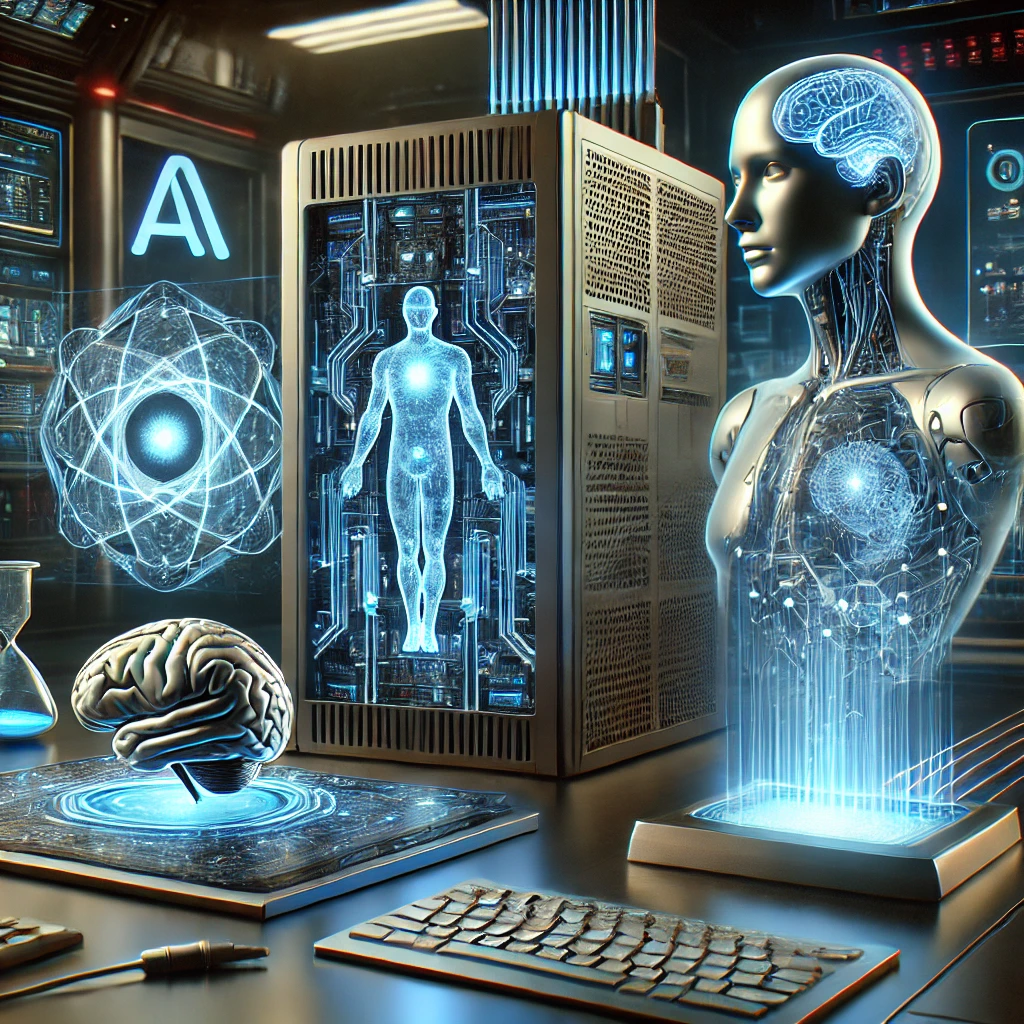Peek
Ahead: The Future of Computing
Computer size changed from 1949 untill today from a
room-sized computers of the 1940s to a slim device that we nowadays keep in our
pockets.
Still, the path is long. We may expect in the next several years technical
progress that would make current computers appear primitive.
Let's explore the future of computers—what is on the
horizon, what it implies for us, and how it might transform our lives in
manners we still need to completely understand.
Rise of Quantum Computing
Bit—small switches that could be either 0 or 1—has been the foundation of
computer information processing for decades. Quantum computers on the other
hand introduce qubits, which can simultaneously exist as both 0 and 1 owing to
superposition. This lets quantum computers compute at rates previously
considered unachievable.
Solving complex passwords, handling huge amounts of data, and addressing
technical issues might become much faster exponentially. Cybersecurity, drug
development, and artificial intelligence all have consequences for this. Work
on improving the stability and availability of quantum computers is opening the
door for a technology and computation revolution.
Slightly more human-like robots from artificial intelligence: smarter
From virtual assistants to recommendation algorithms and autonomous vehicles,
AI has already permeated our daily activities. Beyond mere automation, the AI
of the future will be systems able to grasp emotions, context, and moral
quandaries.
Development of machines that think, learn, and reason like people is artificial
General Intelligence (AGI). Still in development, deep learning and neural
networks developments are helping us to get closer to a world where artificial
intelligence could help with artistic endeavors, scientific discovery, and even
emotional support. Human and machine intelligence are starting to be a bit
fuzzy.
The Capability of Neuromorphic Computing
Neuromorphic computing seeks to produce chips that imitate the human brain's
neural interactions. While conventional computers handle information
sequentially, neuromorphic systems can efficiently deal with great amounts of
data all at once.
These could help advanced robotics run more normally; accurately process
sensory signals; and operate artificial systems. By increasing industries like
healthcare, automation, and communication, neuromorphic chips get us closer to
machines that adjust and reason more like people.
Personal Devices Future: Beyond Smartphones
Personal computing could shift away from regular screens to more immersive and
integrated technologies. AR glasses could overlay digital data on the physical
world and therefore replace smartphones. Real-time help from wearable and
implantable devices might allow for technology to be used hands-free.
On the horizon, too, are brain-computer interfaces. Given the way these systems
would enable direct communication between the human brain and digital
equipment, there would be no need for voice commands, touchscreens, or
keyboards. Development of smart contact lenses with integrated displays is also
under way; they would provide a continuous mix of physical and digital
interactions.
The Green Age of Computing
Future developments have to be environmentally friendly since computers use
much energy. Energy-saving products—including biodegradable circuit boards,
DNA-based data storage, and photonic computing, which uses light instead of
electricity to process—is being developed.
Another possible advance is biocomputing, whereby living cells are used for
computation. Data centers driven by renewable energy sources that are
carbon-neutral will also help to ensure that technological development does not
cost our world so much by making computing more ecologically friendly.
The Future's Moral Face
As technology changes, ethics questions need to be discussed. Great
difficulties include guaranteeing that AI is impartial, protecting personal
information, and stopping quantum computing from being abuse. Given that ideas
could be theoretically reached or manipulated, the evolution of brain-computer
interfaces begs issues of privacy and security.
Balancing innovation and accountability would depend on regulatory structures
as well as moral rules. Working together, governments, academics, and
technology firms will have to set up checks that ensure society and people are
safeguarded as well as promote technology development.
Conclusion
From quantum developments to AI-driven cleverness, neuromorphic chips, and
brain-computer interfaces, the future of computing is rife with possibilities.
These changes will reshape how we interact with technology by pushing the
bounds of what machines can accomplish and by making it more natural part of
our daily lives.
Beyond processing power and efficiency, the emphasis will be on ethics,
sustainability, and guaranteeing that technological development serves society.
Computing is about reimagining what is possible and building a future in which
technology works smoothly for us, not just faster processors or clever devices.
Computing's next stage is emerging, and it looks to be among the most thrilling
to date.













Write your comment